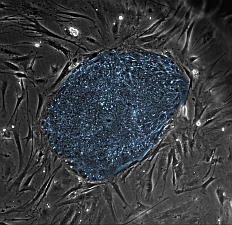University of Michigan in Ann Arbor has added six new human embryonic stem cell lines to the national registry maintained by National Institutes of Health (NIH). The action makes a total of eight lines from the university available for federally-funded research.
The university says the stem cells came from couples receiving treatments at Michigan’s Center for Reproductive Medicine and other fertility clinics. Each of the lines was derived from a collection of about 30 cells removed from a donated microscopic five-day-old embryo.
The Michigan lines carry genes for hemophilia B, an hereditary bleeding condition, and Huntington’s disease, a genetic disorder that causes a progressive degeneration of nerve cells in the brain. Other lines in the new set have genes for hypertrophic cardiomyopathy, a thickening of heart muscles, and the rare genetic diseases hydroxysteroid dehydrogenase 4 deficiency (a hormonal disorder), and Charcot-Marie-Tooth disease Type 1A that causes atrophy of muscles in the lower leg and hand weakness. Three of the cell lines do not carry disease genes.
The embryos carrying disease genes, says the university, were created for reproductive purposes, tested, and found to be affected with a genetic disorder. As a result, they were deemed not suitable for implantation and would have otherwise been discarded if not donated by the couples who donated them.
Human embryonic stem cells are considered important for research and potential therapies, because the inner cells of the three to five-day old pre-implanation embryos can develop to the entire body of the organism, including the many specialized cell types and organs such as the heart, lung, skin, sperm, eggs, and other tissues. As of 15 June 2012, NIH had 163 such cell lines in its registry.
Read more:
- Stem Cells to be Produced for Research in Muscle Disorders
- Scientists Finding Problems Accessing Stem Cell Lines
- NIH Approves Two Human Embryonic Stem Cell Lines
* * *


 RSS - Posts
RSS - Posts
You must be logged in to post a comment.